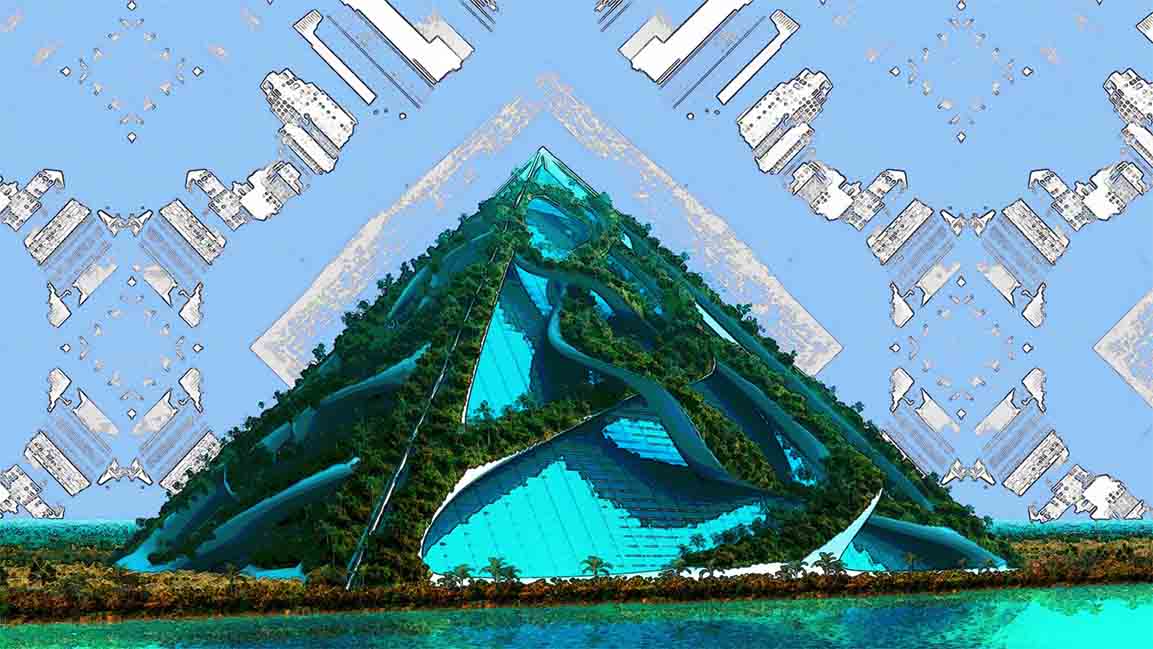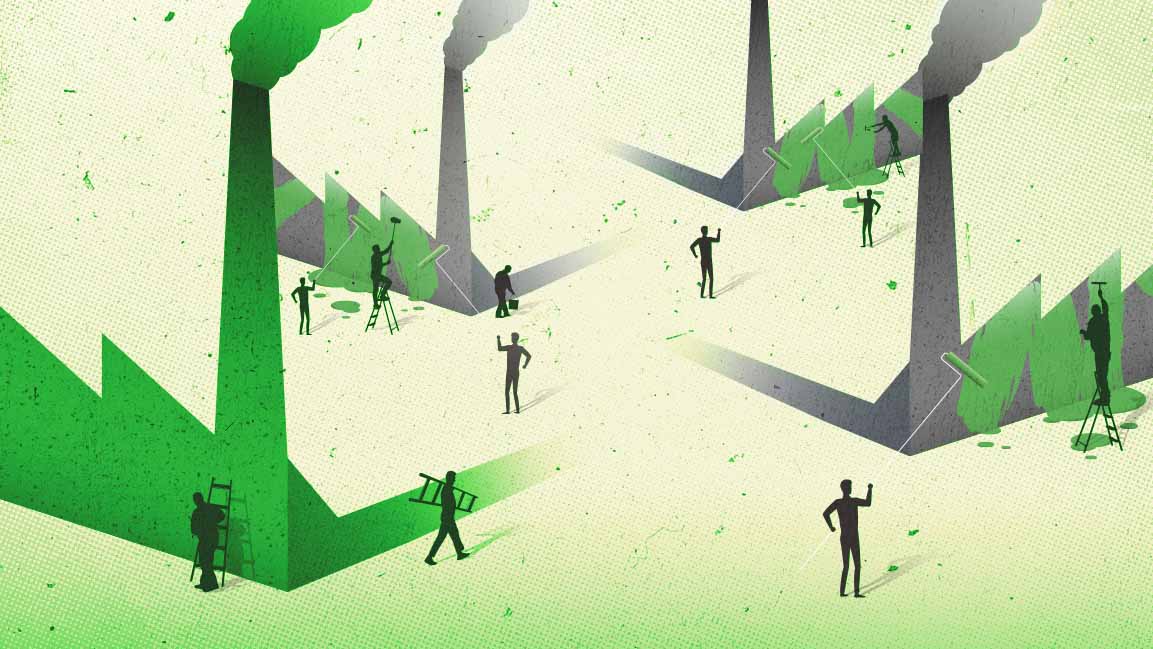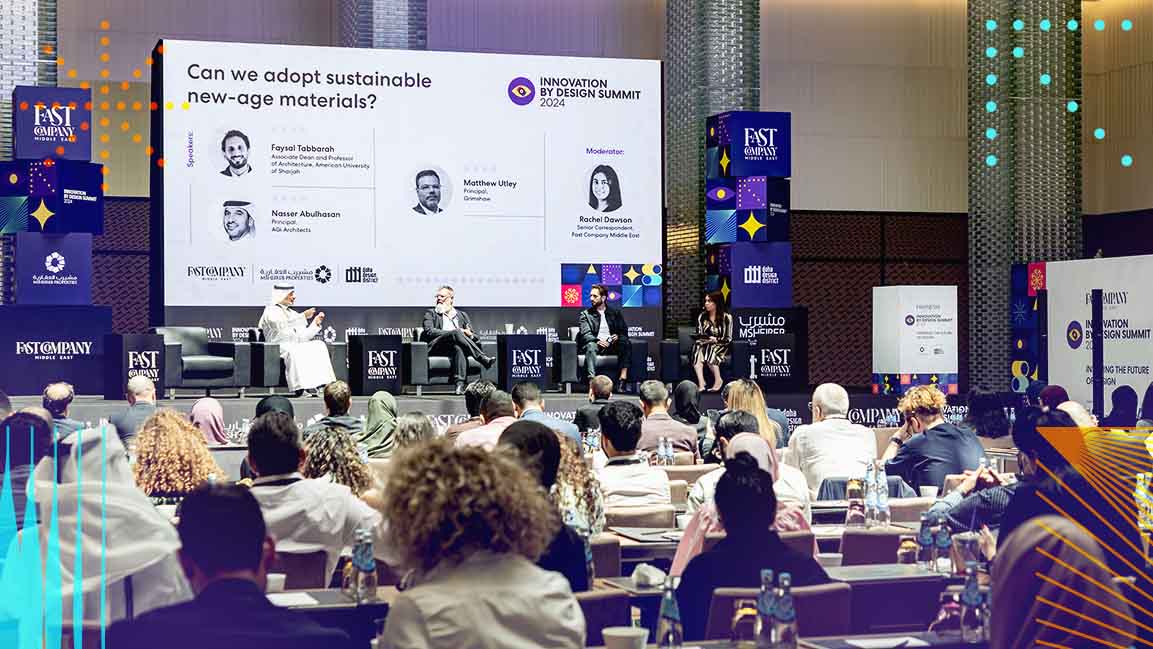- | 9:00 am
The real estate industry in the Middle East has green regulations. So what’s holding it back?
With thousands of housing units, commercial properties, and hotels under planning and development across the Gulf region, building sustainably is more important than ever.

Buildings generate nearly 40% of the world’s CO2 emissions—and since two-thirds of the buildings that exist today will still be around by the middle of the century, urban planners and architects need to rethink their design now to have a chance of meeting goals for a net-zero economy.
Green building regulations made their way into the Gulf Cooperation Council (GCC) region almost a decade ago and were initially met with resistance due to the changes involved. But now, the real estate industry is shifting in the Middle East as they realize it can be a tool to improve profitability.
“The Gulf region has seen massive real estate development in recent years, so to get everyone to understand its impact took effort by industry leaders. Recognizing the carbon footprint generated by the sector was key to the progress we see,” said Hani Abdel Razeq, associate director and Saudi Arabia team lead at AESG, a construction engineering company.
MOMENTUM BUILDS UP ACROSS THE REGION
In 2010, the UAE announced green-building standards to be applied across the country. That year, Abu Dhabi introduced mandatory efficiency standards for new buildings through its Estidama rating system, and Dubai passed its green-building regulations. In 2018, Ajman said buildings would get construction permits only if they complied with green-building regulations.
“While the government and some developers have shown good leadership in constructing several green buildings in the UAE that go above and beyond what is legally required, I think, on the whole, the current building regulations are what determine the “greenness” of buildings being built in the country today,” said Kirstin Morrison, a UAE-based senior green growth analyst at South Korea’s Global Green Growth Institute.
As a result of these regulations, residential projects such as The Signature Livings in Jumeirah Village are now powered by solar energy, and Abu Dhabi is set to have its first net-zero energy office building by 2024 in Masdar City.
“We built our first net-zero energy building in 2017, and now we’re scaling them. For us, this is a journey to figure out different ways. Today we have 400,000 square meters of built development, all fully occupied, of varying degrees of sustainability. We intend to go further. There’s still the water dimension, and we’re also dealing with embodied carbons,” Chris Wan, head of design management at Masdar City, said during COP27 in Egypt.
As the UAE gets ready to host COP28, the country is doubling down on sustainability. In December 2022, the UAE Cabinet approved National Building Regulations and Standards to help decarbonize construction. The initiative aims to cut energy consumption in buildings by as much as 25% and water usage by 16%.
“The UAE is leading the green-building space in the region. It was the first GCC country to commit to net zero, and that encouraged many corporates, governmental entities, and developers to establish policies and procedures to become more sustainable. Green-building regulations also created a clear path to decarbonize real estate,” said Abdel Razeq.
“Many regional developers, including market leaders such as Majid Al Futtaim, now have sustainability policies. All their assets are designed with a certain energy, water, and materials KPIs and certified by local and international green-building rating systems. Such efforts are driving sustainable real estate development,” added Abdel Razeq.
The UAE had 869 green-rated buildings as of 2021, the 14th highest concentration worldwide, while Saudi Arabia ranked 54th with 38 green-rated buildings, consultancy Knight Frank said in its second edition of (Y)our Space report.
Saudi Arabia introduced its green-building rating system, Mostadam, in 2019 and tailored it to its local climate and environmental characteristics.
“Saudi Arabia has made a quantum leap in the last few years, and Mostadam is recognized by many of the big developers in the kingdom who are working on the giga projects,” said Abdel Razeq. He added that the country’s decision to reach net zero by 2050 instead of the originally announced 2060 is also fuelling the sustainable building movement in the country.
Meanwhile, Qatar incorporated its Global Sustainability Assessment System (GSAS) into its national construction standards in 2010. It is now mandatory for all private and public sector projects to get certified for this green-building rating system.
Qatar had more than 1,400 GSAS-certified buildings in 2021, including all World Cup 2022 facilities. While the country hasn’t announced a net-zero goal, it launched a national climate change action plan in 2021 to reduce emissions by 25% by 2030.
“Qatar has been at the forefront of adopting more sustainable practices, and major developments adopted their green-building rating scheme. Some suppliers changed their material characteristics, procurement procedures, and other aspects of construction activity to align with sustainability requirements,” said Abdel Razeq.
COST MISPERCEPTIONS
The ongoing shift to sustainable construction is expected to considerably impact the region’s carbon footprint.
After all, more than 555,000 residential units and over 275,000 hotel keys are planned to be built in Saudi Arabia by 2030, according to global real estate consultancy Knight Frank. And in the UAE, 88,000 housing units are expected to be built in Dubai and 16,400 units in Abu Dhabi by 2025.
However, cost misperceptions are delaying the adoption of sustainable buildings, according to Shashi Narayanan, principal sustainability lead for Qatar at Dar Al-Handasah, an international consultancy active in engineering, architecture, and environmental consulting, among other areas.
“The main barrier is the perception that it will cost too much to go green, that sustainability and low carbon approaches are an expensive ‘add-on,’ instead of adopting the mindset that green building is an inherent part of the development process, with as much importance as the inclusion of the roof or walls of the building,” said Narayanan.
He said that the redevelopment and retrofit of existing buildings to high-performance green standards are seldom considered an option, with the preference to demolish and start again. “This approach needs to radically change if the GCC nations are to achieve the net zero targets that they’re seeking.”
TAKING A HOLISTIC APPROACH
Several developers now take advantage of the green-building trend to promote their assets. While it’s a compelling proposition that attracts investors and tenants, it’s not healthy or ideal, according to Abdel Razeq.
“It’s an indirect positive impact. As part of the industry, we’re helping developers and key decision makers to understand that sustainability is not a marketing tool, but the right way to construct real estate – taking a holistic, long-term approach to development,” he said.
“We proved through assessments that you can save more than 30% of an asset’s total carbon footprint by adopting a few decarbonization measures that would [increase] capital expenditure by only 7%. This is nothing compared to the overall budget a developer typically considers for a project.”
Additionally, upfront investment in green buildings makes properties more valuable, with a growing number of owners seeing a 10% or greater increase in asset value, according to the World Green Building 2018 report, which examined trends in 19 countries.
Yet, the lack of information about the sustainability of buildings remains an obstacle, such that when a developer produces a greener building, it is often indistinguishable from other facilities.
“This can make it difficult for the developer of green buildings to recover additional costs. Alongside this, there’s a lack of public awareness about the potential impact of greener buildings and a short-sighted view of cost – prioritizing lower upfront costs at the expense of higher operating and maintenance costs over the life of the building,” said Morrison.
The absence of sustainability teams from real estate development companies is another challenge. Such a team usually drives how projects and yearly decisions shape and help make sustainability a core component of business decisions. Sometimes this structure exists, but it has little influence internally on business decisions.
“If more sustainability-driven decisions are made, developers might mandate more efficient systems as they would understand that over the building’s service life of 50 years, they would save on operational carbon by investing 10% more at the CAPEX stage. Having this communicated internally helps,” explained Abdel Razeq.
BELIEVING IN TECHNOLOGY
Technology has mainly facilitated the construction of green buildings, especially using digital tools, Building Information Modeling (BIM), and energy modeling, which has helped the industry be more efficient over the last decade.
Another design approach gaining worldwide traction is adopting certified passive house standards. “These create highly insulated buildings that reduce the need for both heating and cooling, thereby substantially reducing the energy demand and carbon emissions of the building,” explained Narayanan.
However, green-building innovations are rapidly evolving, and new solutions often come at a higher cost. This could have financial implications for projects.
“We saw how many years ago in the region, solar photovoltaic systems didn’t make much sense because tariffs and installation costs were much higher than they are today. But as it became more mainstream, we started seeing the return on investment dropping from 30 years to 10 or 15 years,” said Abdel Razeq.
“When we understand that paying a premium at the start is good for the long term because we’re developing these assets for 30 years and longer, we will benefit and get the payback, and we will contribute to the net-zero targets. It’s about spending more at the start to save in the future. We need everyone to be having this conversation.”








































